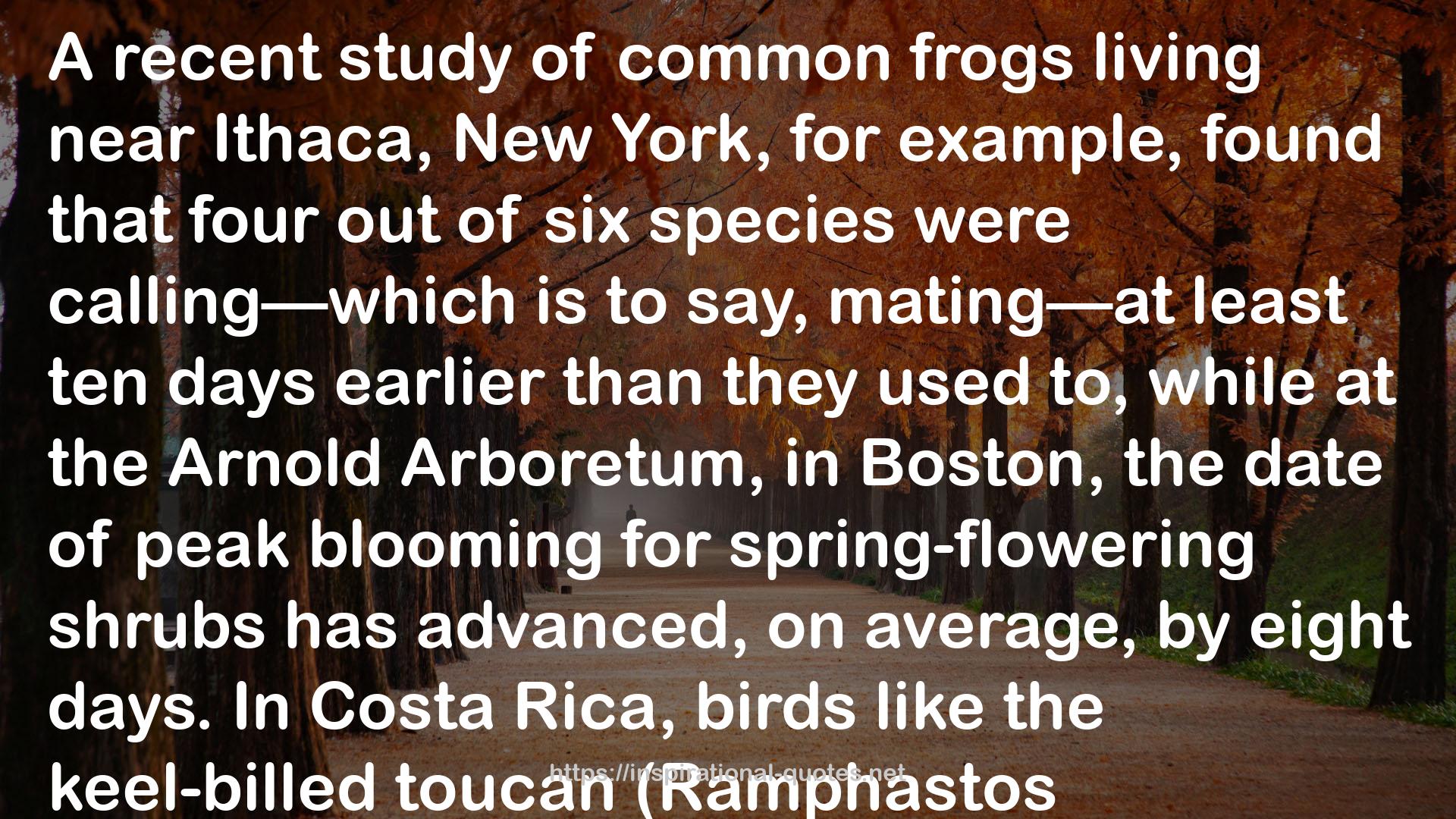" A recent study of common frogs living near Ithaca, New York, for example, found that four out of six species were calling—which is to say, mating—at least ten days earlier than they used to, while at the Arnold Arboretum, in Boston, the date of peak blooming for spring-flowering shrubs has advanced, on average, by eight days. In Costa Rica, birds like the keel-billed toucan (Ramphastos sulfuratus), once confined to the lowlands, have started to nest on mountain slopes; in the Alps, plants like purple saxifrage (Saxifraga oppositifolia) and Austrian draba (Draba fladnizensis) have been creeping up toward the summits; and in the Sierra Nevada of California, the average Edith’s Checkerspot butterfly (Euphydryas editha) can now be found at an elevation three hundred feet higher than it was a hundred years ago. Any one of these changes could, potentially, be a response to purely local conditions—shifts, say, in regional weather patterns or in patterns of land use. The only explanation that anyone has proposed that makes sense of them all, though, is global warming. "
― Elizabeth Kolbert , Field Notes from a Catastrophe: Man, Nature, and Climate Change
